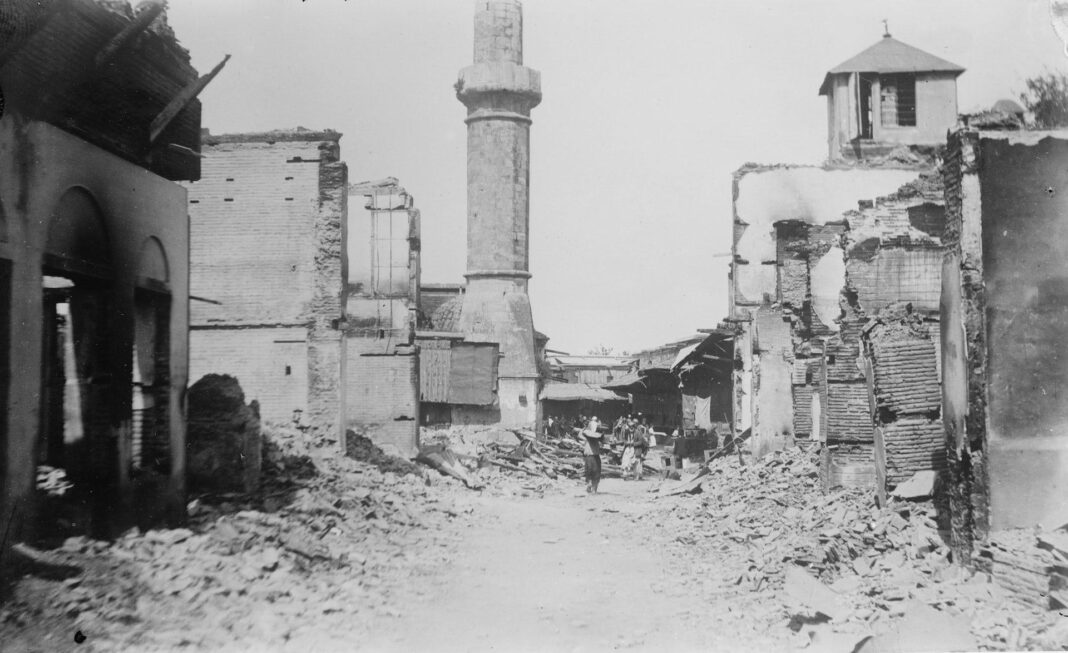The anniversary of the Armenian Genocide is marked every year on April 24. That was the date in 1915 when hundreds of Armenian community leaders were arrested by the government of the Ottoman Empire in the capital Constantinople, now known as Istanbul.
At the time, Armenians lived throughout what is modern-day Turkey. Modern scholars estimate up to 1.5 million Armenians were killed by the Turkish government, and around 800,000 to 1.2 million were deported during World War I. Most ended up in the Middle East, the Caucasus, Russia, Europe and the Americas. During that period, Greek, Assyrian and Yezidi communities were also massacred and forced to flee into exile.
April is also Genocide Awareness Month. Holocaust Remembrance Day takes place this month every year, as do commemorations for genocides in Cambodia, Iraqi Kurdistan, Rwanda, Bosnia and Darfur.
For much of the 20th century, commemorations of mass killings and genocide have focused on remembering the dead as victims and condemning the perpetrators.
But recent research has taken a broader view, recognizing that mass violence takes place because of many complex factors. Besides political, economic and cultural currents, the resistance and resilience of the people who were targeted are coming to the fore of scholarly work and public understanding.
The 1915 Armenian Genocide was not the first attack on Armenians in what is now Turkey. In the 1890s, hundreds of thousands of Armenians were targeted by the government of the Ottoman Empire in what came to be called the Hamidian Massacres, as they took place during the reign of Sultan Abdul Hamid II.
And in 1909 – again, in April – there was a separate such episode. Those massacres took place in the region historically known as Cilicia, on the Mediterranean coast of southeastern Turkey today. In two waves of violence at the end of April 1909, more than 20,000 Armenians and other Christians were killed by Turks connected with the government. The violence happened in and around the city of Adana and extended into neighboring areas. Muslim populations suffered as well, with an estimated 2,000 killed in retaliation for the massacres.
Some present the Hamidian and Adana massacres as dress rehearsals for the Ottoman Turkish government’s plan, decades in the making, to implement the all-out elimination of the Armenians in 1915, dispossessing them of their millennia-old historical homeland. Among Armenians, this is the prevalent nationalist reading of Armenian history.
Recent scholarship has taken a closer look at the details of these massacres. In particular, scholars are beginning to highlight the fact that, despite facing mass violence, Armenians and others organized resistance activities and put together relief work in the aftermath of killings. Sometimes resistance was armed, and sometimes it consisted of putting together protest campaigns or publishing newspaper articles and books in the Ottoman Empire and beyond.
“The Horrors of Adana” by Bedross Der Matossian is the first in-depth work on the Adana Massacres. Der Matossian writes about the actions of a prominent literary figure, Zabel Yessayan, who was among the leaders of relief efforts following the 1909 massacres, bringing in food, clothing and other necessities for the survivors. Yessayan also wrote “In The Ruins,” published in 1911, specifically to document the aftermath of the killings and to support humanitarian aid, media outreach and legal efforts.
“The Resistance Network” by Khatchig Mouradian documents the work of Armenian community leaders such as Rev. Aharon Shirajian to support the survivors of death marches and deportations. Shirajian himself cared for a number of orphaned genocide survivors in Syria.
These stories are not only powerful on their own but can also have lasting effects in the global effort to end genocide. Fiction can play a role, too. “The Forty Days of Musa Dagh” by Franz Werfel is a gripping novel that recounts the armed defense by a group of Armenians in one corner of the Ottoman Empire in 1915.
The book, which was published in 1933, the year Hitler took power, served as an inspiration for the anti-Nazi resistance in the Jewish ghettos of Warsaw, Bialystok, Vilnius and elsewhere in the 1940s.
Jewish resistance to the Nazi genocide is another topic being given due attention by historians. The forthcoming “Resisters” by Wolf Gruner is a work along these lines, focusing on the actions of five Jewish individuals during the Holocaust.
These efforts are beginning to shift how scholars and the public understand genocide. Those horrific actions were not carried out against passive victims, but rather were aggressions which, in many cases, faced intense and organized resistance. The perpetrators killed many but did not destroy the spirit of their victims. The survivors and their descendants have good reason to celebrate that spirit of resilience in the face of immense suffering.
This article is republished from The Conversation, an independent nonprofit news site dedicated to sharing ideas from academic experts. If you found it interesting, you could subscribe to our weekly newsletter.
Read more: Genocides persist, nearly 70 years after the Holocaust – but there are recognized ways to help prevent them Putin’s claims that Ukraine is committing genocide are baseless, but not unprecedented
I am personally acquainted with two of the authors I mention in this piece. We are simply friends and colleagues. There is no financial relationship among us or any other relevant interest.














